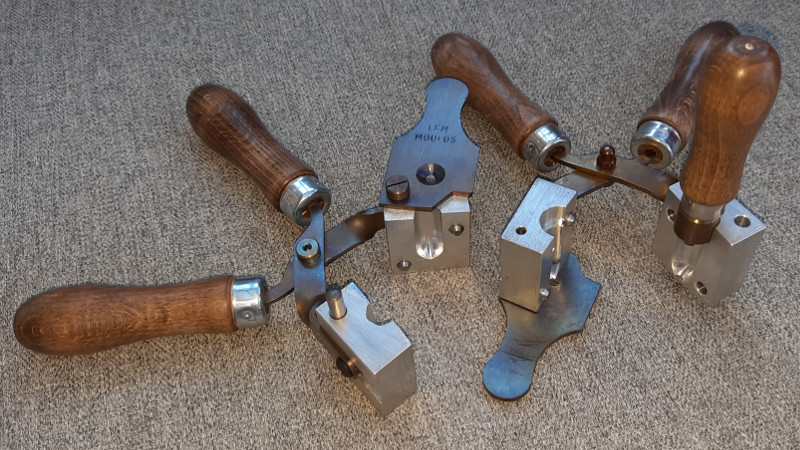The Whitworth rifle, who has not heard of it? It’s reputation is legendary and the lore of it’s accuracy has acquired a life of it’s own in the past 150+ years. When the Whitworth was in it’s heday, it was offered as a military rifle, a sporting rifle, a military target rifle, two band and three band, and a full on target/match rifle. It remained popular as a long range target rifle even after the Henry and Gibbs rifles surpassed it’s reputation. It is still popular today.
If you have not heard of the Whitworth rifle, the best place to learn more would be David Minshall’s excellent Research Press website. There you can discover what made this rifle such a historic breakthrough in long range shooting. Go and check it out, we’ll wait…
http://www.researchpress.co.uk/index.php/research/hexbore
Joseph Whitworth’s rifle set the world on fire when it first appeared. It could be said that he gave birth to the idea that accurate long range marksmanship was possible. I believe everyone who shoots a 6.5 Creedmoor, or anything ending in Lapua or Cheytac, owes Sir Joseph a hearty HUZZA!
Parker Hale in England was the first to bring out a reproduction rifle in the 1970s. Currently, there are two companies making reproductions, Pedersoli and Euroarms, though there may be others I am not aware of. The Pedersoli seems to get the nod from shooters for quality. Of course, you can sometimes find a well cared for Parker Hale on the auction websites. Don’t expect to just pick one up for muzzleloader prices though, they are so well thought of they have become collectible in their own right.
I was first bitten by the Whitworth bug back in the 1970s when I saw my first Parker Hale Whitworth at the Spring Nationals, in Friendship Indiana. I could not afford it on my high school part time income, but I never lost my desire for one. Now, a few decades later, I have both a Parker Hale and a Pedersoli.
I had the pleasure of sharing a LRML firing line several times with George Armstrong. He shot a wonderful Whitworth Match rifle with hexagon bullets he swaged himself. I asked him once if they were more accurate and he said they were not. Cylindrical bullets shot just fine and were used more than hexagon bullets in British match shooting. I asked why he bothered to swage and patch hexagon bullets and his reply was, “It’s a Whitworth”. Enough said.
I, like most others, shoot my Whitworths with standard cylindrical bullets. Paper patched, loaded with a felt wad as Sir Joseph intended. Hexagon molds are available but can be expensive and hard to find. The Kranen mold is a marvel of engineering and is supposed to cast a good and proper bullet. Finding them second hand can be a challenge and the price reflects their rarity. The single piece brass molds are expensive as well, and shooters who have purchased them have no kind words. Pedersoli makes a Whitworth mold for their reproduction and I have a bullet cast from one of their molds. I have no idea what it fits, but it is too large for my Pedersoli, as it was for the mold owner’s Whitworth. I have seen other mold makers offer a hexagon mold. I tried to purchase one, but multiple emails were never returned. I have continued to enjoy my Whitworths shooting the common cylindrical bullet. But, like others I suspect, I have always wondered about the hexagon bullets.
This fall on the British Militaria forum Glenn McQuire of LEM molds announced he was making proper hexagon molds in both plain base and hollow base designs.

His reputation is first rate and the mold was cut with an original nose design. While it is commonly found that Whitworth bullets are 530 grain weight, several sources show a 480 grain weight bullet early in the Whitworth history. C.H. Roads’ excellent book The British Soldier’s Firearm 1859-1864 lists both 480 grain and 530 grain for ball weight. The 530 grain mold offered did not include the hollow base and that is what I wanted. The price was fair, so an order was placed for a 490 grain hollow base mold and a tracking number was promptly returned by Glenn.
So, now I wait. I plan. I get out my Whitworths and make sure they are in good condition. The lead pot has been refilled with cleaned pure lead and the casting area organized. I have punched a few dozen hexagon wads from dense 100% wool felt and lubed them with a period lubricant, Westley Richards No8 (I have an upcoming post on the lube and this will be it’s first trial). I have also punched hexagon wads from beer coaster material. All so I can test both the Parker Hale and the Pedersoli Whitworth with what I believe is the original loading.
This will be fun.

